16.6.4.Configuration of Teams archive retention changer job
This job changes the retention time of messages and files of the selected team(s) if it’s allowed to change the retention on the storage level. Storages that support this change are: Disk, Azure, and Amazon S3.
Go to Jobs -> click on +new -> select Teams archive retention changer.
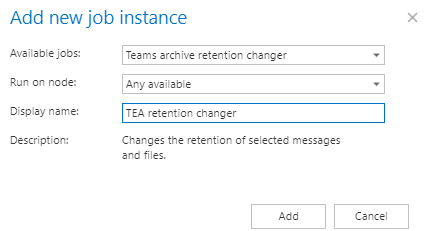
On the job’s configuration page go through the following sections:
✓ Running mode settings (mandatory)
The job can be run in 3 modes:
1) Immediate processing -> collects the documents/messages and changes their retention.

2) Create report -> collects the documents/messages and provides a csv file with a list of items. The administrator can review and edit the list of affected items.

3) Apply report -> a csv file with a list of items to be processed must be uploaded. The administrator can delete items from the list before running the job (only documents/messages which are in the list will be processed). The job reads the list and changes the retention of the items that are on the list.
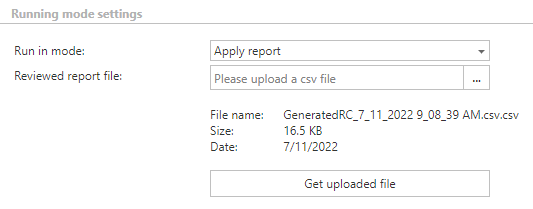
✓ Scheduling settings (mandatory)
In this section the running times of the retention changer job must be selected. It is possible either to select a scheduler from the list or to create a new scheduler via the “Create new …” option.

✓ Retention settings (mandatory)
Select the new retention to be applied for the items.

✓ Address book objects to process (mandatory)
In this section, the user must select the team(s) which will be processed. There are two available options for how the list of the team(s) may be specified:
a) Process All teams – in this case, the retention will change on all previously provisioned and archived teams.

b) Process Selected teams – in this case, the teams may be added via select option, and they must be added manually one-by-one. Click on select to open the Team selection dialog.

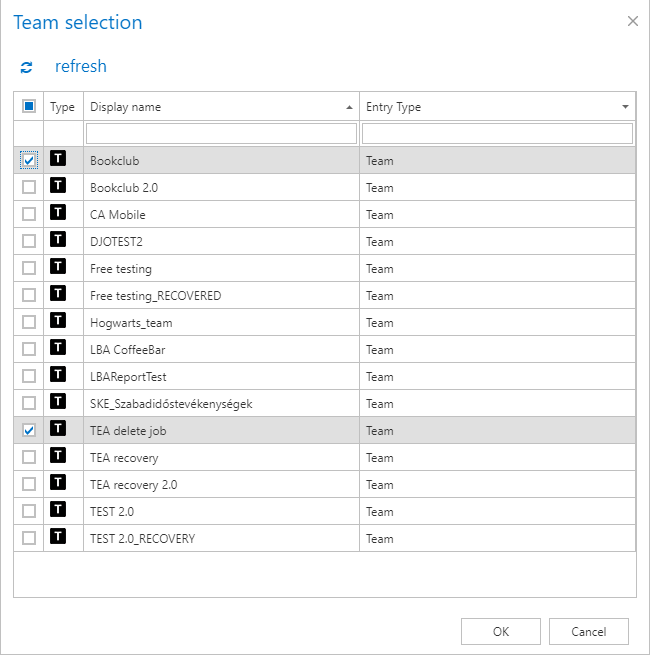
✓ Processing and filtering settings (mandatory and optional)
The user can select what will be processed during the retention changer job in this section. First, select what to process: all data or selected data. In the case of the all data option, the retention will change on all channels’ messages, files, and non-channel related SharePoint data.

When the user selects the selected data option, the Filter team data settings appear. Here are the following options can be selected and defined:

- Process all channels (or filter them out) – the retention can be changed either on all channels’s data or only the channels matching the filtering settings. The channels can be filtered out by the name or the type (IsPrivate=Yes/No)
Note: The default channel in Teams is General, which is created automatically with the team. This channel will be displayed in the background as „General“ even if the users set/use different languages for the Teams client. Because of this, when the user wants to filter out the default channel by the channel name, it needs to be added in English (the other channels can be filtered out with the supported languages), otherwise, the job won’t process this channel.
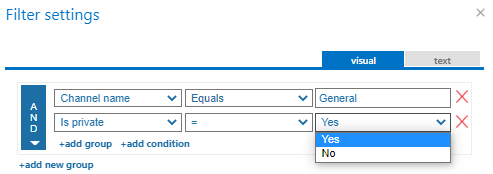
- Process messages where filter is [not set] – if this checkbox is selected, but no filter is added, then all messages from the defined channels are processed. If the user clicks on the Change filter button (or on the not set), the Filtering settings window appears, where the user can decide which messages will be processed and skipped.
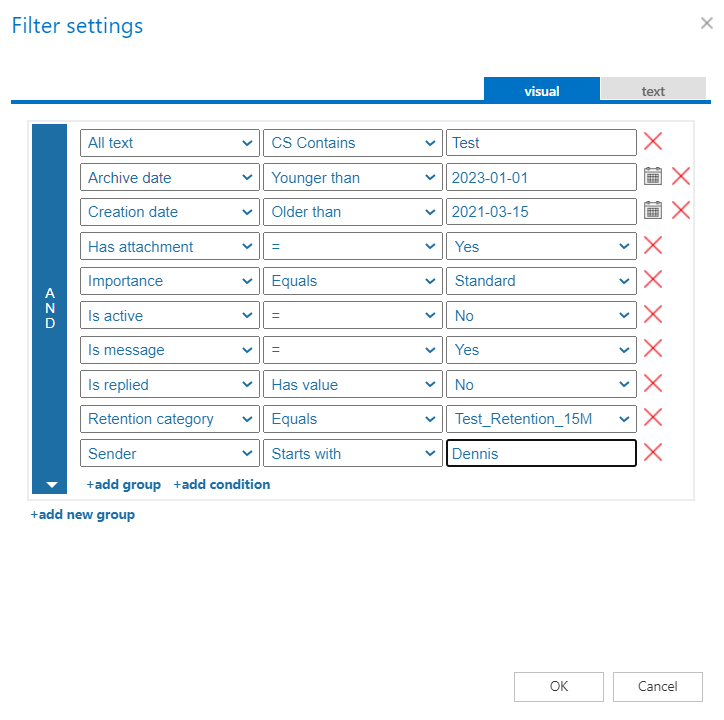
- Process files where filter is [not set] – only the files’ retention (all or filtered out) will be changed if this checkbox is selected. If the user does not add filters to the job, then all files will be processed from the defined channels. It is also possible to decide which items will be processed and skipped by clicking on the Change filter button (or on the not set). In this case, the Filtering settings window appears, and the user can set the filters for the retention changer job.
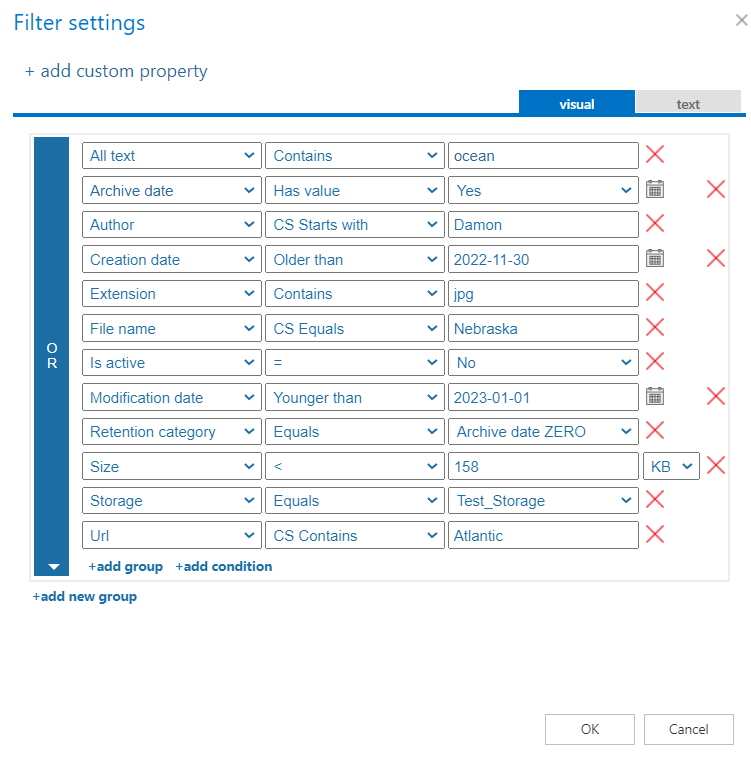
- Process non-channel related SharePoint data – SharePoint is deeply integrated into Teams. Files that are stored in Teams are in Sharepoint sites, and these sites can be used by Teams for file storage (these are called Teams-connected sites). These sites are created automatically whenever a user creates a team. The files stored in both Teams and SharePoint sites can be processed by the Process files option, but those items which are available only on the SharePoint sites (lists, tasks, calendar items, contacts, manually created document/picture libraries) are skipped with that option. To be able to change the retention on those items, the Process non-channel related SharePoint data option needs to be selected. This option allows the user to process/skip the custom SharePoint lists/document libraries. For more information about the Teams and SharePoint integration, read this article.

To set the filtering settings, click on the Change filter or not set button and set the filtering according to your needs and/or regulations. To learn more about how to work with filtering settings, please, check this section of our documentation.
✓ Notification settings (mandatory)
Select here, when you will need to get notification emails from the Retention changer job. It is possible to set here if you need a notification email always/never, or you need it only if an error/warning occurred during the process − for example, if the retention change of one or more items failed, then you may get a notification email about this error. Into the Recipient list textbox insert the email addresses of the people to whom you would like to send these emails – if there are multiple recipients, the addresses must be separated by “,” or “;”.

✓ Resource settings (mandatory)
Set the value, which will determine how many items will be processed simultaneously by the Retention changer job. The recommended value is 2, as in our case.

In the end, never forget to save your job configurations: click on Save in the left upper corner of the UI.
